Projects
Fossil Fuel Non-Proliferation Treaty Initiative: Systems Thinking Platform
The Treaty Initiative is pushing for a global transition to safe, renewable and affordable energy for all. To support this work, we created a system map and a number of different narratives and animations, including deep dives into rigged system market dynamics and into the dominant industry hold that keeps the world locked-in to fossil fuels.
The Theory of Change shows their sophisticated systemic approach for tackling these complex challenges – designed to maximise the force and impact of these powerful, interconnected levers.
The platform is a tool for diving into this complexity and understanding the interconnected nature of a system that needs reinforcing solutions, spanning from local grassroots to the multilateral arena. It is offered as a gameboard for collaborations to forge ahead with coherence and scale.
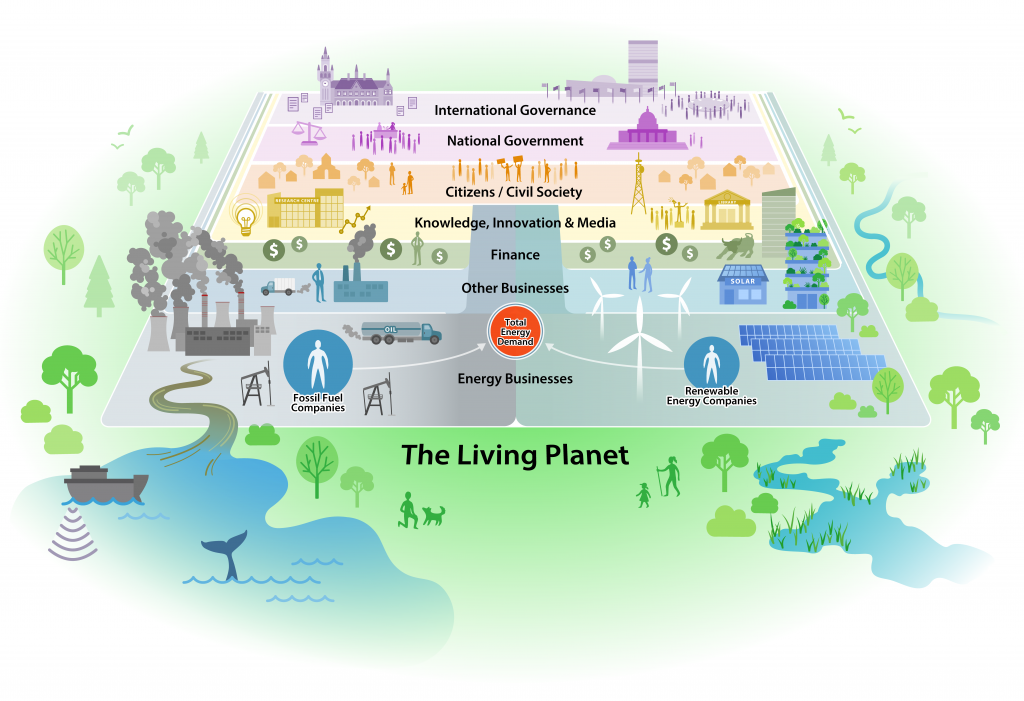
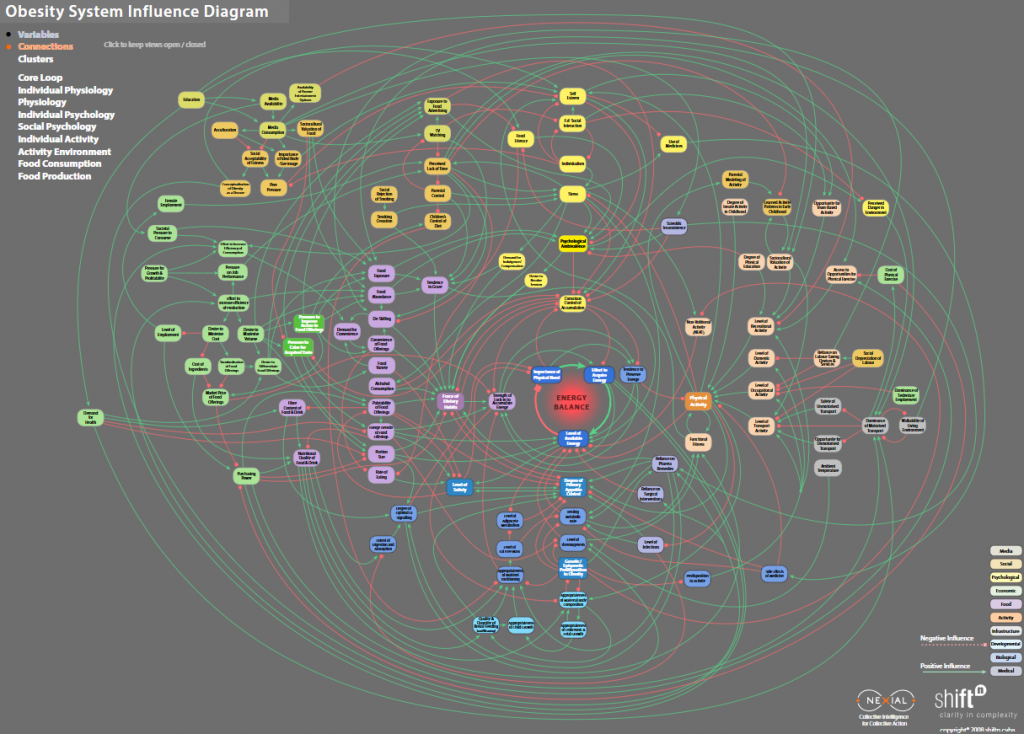
Tackling Obesities: Future Choices
The 2007 Foresight Tackling Obesity: Future Choices project “looked at how we can implement a sustainable response to obesity in the UK over the next 40 years. It gathered scientific evidence from across a wide range of disciplines to inform a strategic view of this issue.
The project’s objectives were to:
• use the scientific evidence base from across a wide range of disciplines to identify the broad range of factors that influence obesity
• create a shared understanding of the relationships between the main factors influencing levels of obesity and their relative importance
• build on this evidence to identify effective interventions
• analyse how future levels of obesity might change and the most effective future responses
Vale: Ecossistema das Quebradeiras de Coco Babaçu
In partnership with Fresta – Espaço, Mobilidade e Sustentabilidade, we worked with Vale in the Babaçu Coconut Breakers Ecosystem project. The main goal of this work was to develop a strategic narrative and visual presentation of the history and ecosystem of babaçu coconut breaker extractivists, understanding this movement as a successful initiative and relevant to Vale’s commitment to lift 500,000 people out of extreme poverty by 2030. This was a high level narrative to start to demonstrate the layers of complexity involved in a social movement, which translates into an economic activity generating not only income, but a more comprehensive quality of life for women and families and socio-territorial development in the North and Northeast of Brazil.
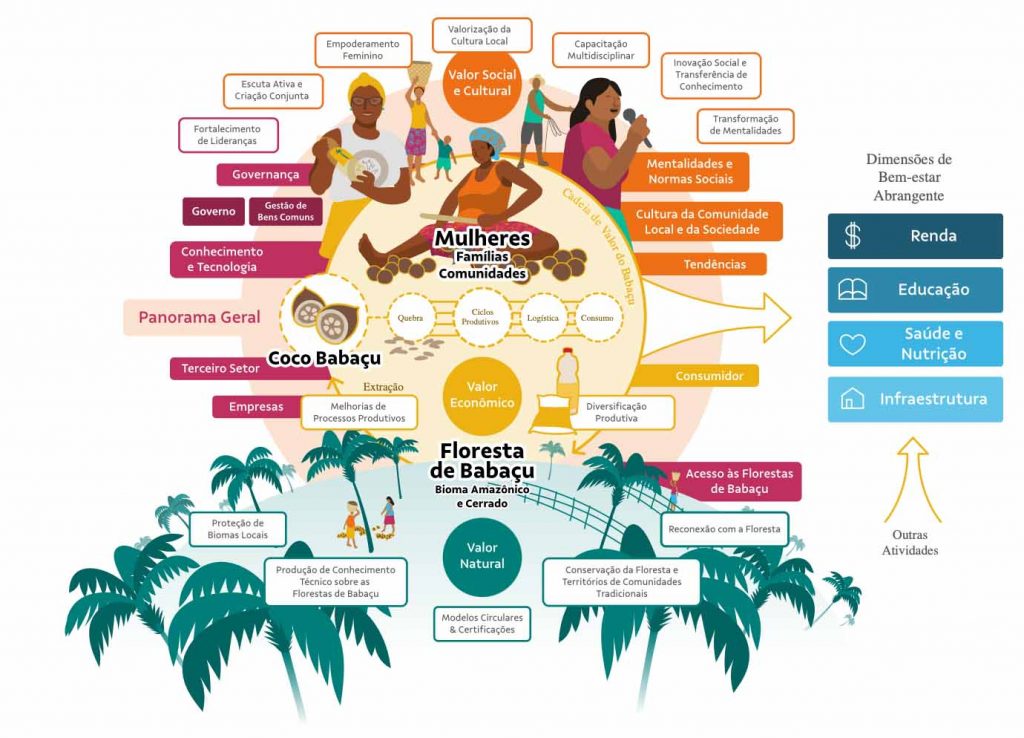

Climate Smart Forest Economy System Map
We had the opportunity to work with the great teams from CSFEP (and its partners, Dalberg Catalyst, Climate-KIC, Axum) to build The CSFE System Map. It was created to help explain what a Climate Smart Forest Economy is, and the role that the Climate Smart Forest Economy Program plays in helping to make those sustainable economies a reality.
This map is offered as a community tool for all those working, in their many different ways, to create climate smart forest economies. The map was designed for different stakeholders to build on – creating versions for different audiences, regions, and programs. We aim to update the map periodically and add new views and use-cases based on what is being learned.
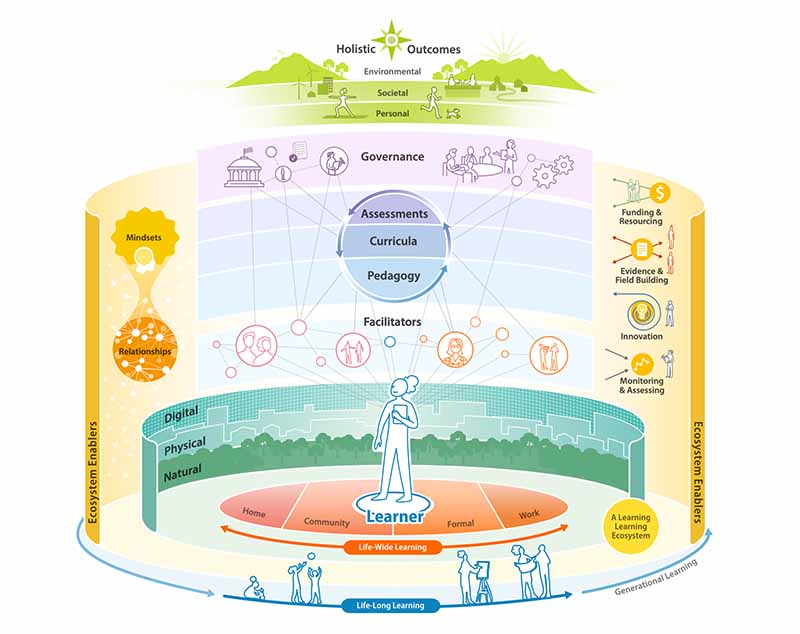
Jacobs Foundation: Learning Ecosystems
This interactive platform was created as a tool to help support Jacobs Foundation’s mission and support a shift of paradigm by encouraging discussion about Learning Ecosystems. It’s designed to support multi-stakeholder conversations about what’s needed to transform today’s systems so that they better serve individuals, society and the planet.
Nourish Hawai’i: Transforming Hawai’i’s Food System Together (THFST)
In a followup project with WorldLink and its Nourish Initiative, Nexial worked with the University of Hawaii (UH) and a consortium of local organizations to create action towards a more sustainable and equitable food system. Through a participatory system mapping process, we helped these stakeholders better understand the structure of the current food system and how, based on where their different initiatives fit into this picture, they could work more effectively together. We looked at both the particular food pressures in Hawai’i – an island state, with a long history of colonial land control, and a present-day tourism-based economy – as well as more universal elements of state-level food policy (derived from a UH research into different state’s food policy frameworks). Through multiple workshops we used the Hawai’i Food System map as a tool to gather perspectives and insights, and plot food system strategies. The online map now serves as a reference for ongoing work by the consortia.


Tanya’s Dream Fund: The System of Children in Families
Tanya’s Dream Fund aims to be the catalyst for change needed to keep families in adversity together in Bulgaria. In order to deliver on Tanya’s dream and transform the system, it is first necessary to understand and build on the important work already under way. The project aim was to design a system map to support Tanya’s Dream Fund and other actors across Bulgaria in identifying how and in what way transformative interventions can take place to keep children within families. This map was developed through research, interviews, workshops and systemic analysis.
Just Transition Conversations in BC
This project was designed to support participatory approaches that promote a vibrant democracy in West Vancouver – Sunshine Coast – Sea to Sky Country (BC). Based on evidence available and community conversations hosted in these 3 areas, Nexial created a big picture view of a world that is born of a just transition. The system map and the digital platform was used by volunteers engaging with the public to better stimulate and support conversations – keeping the focus on specific, important topics that matter to individuals in each conversation (e.g. jobs, transport, health) but not losing sight of the big picture of just transition and the interdependencies between social, environmental and economic points of view.
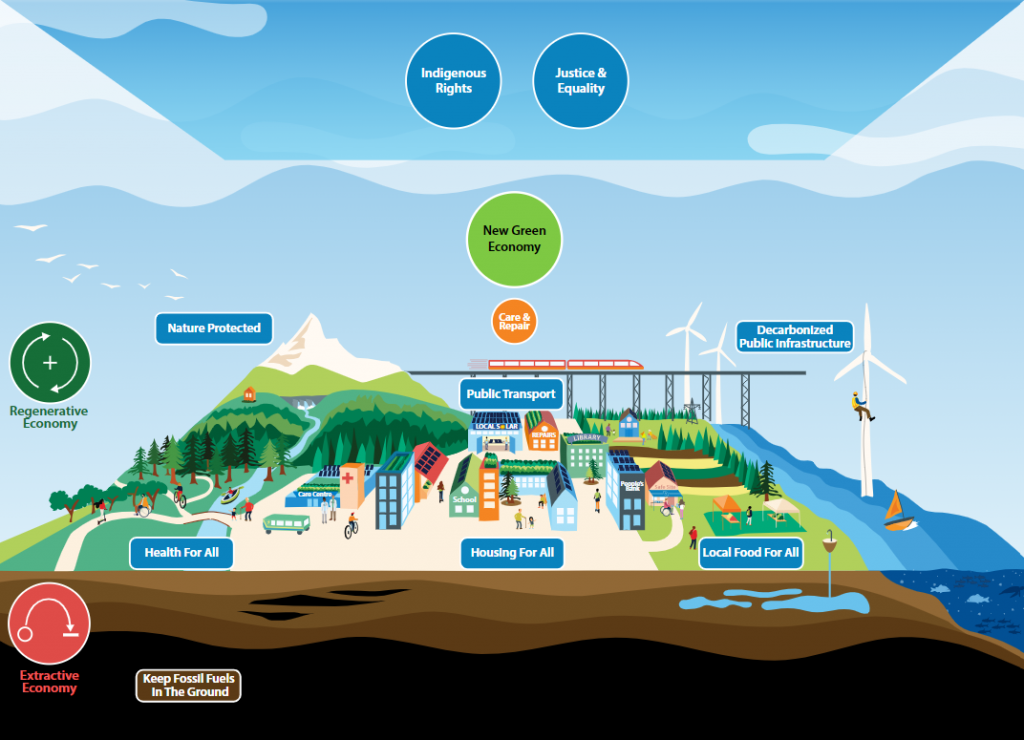
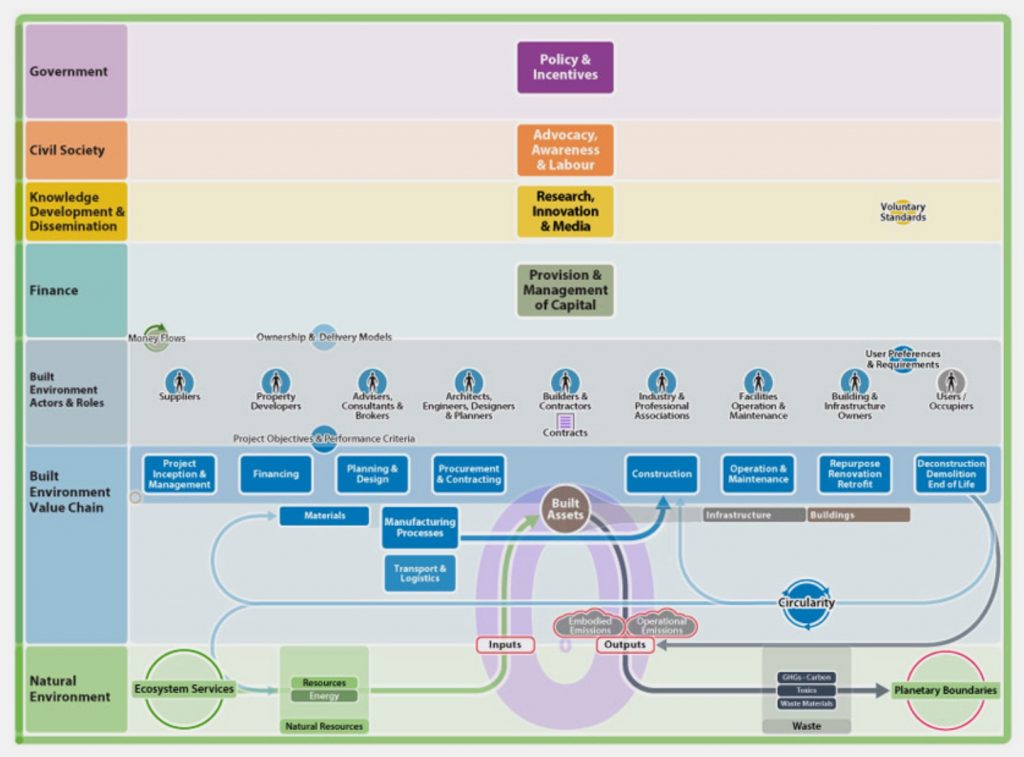
Race to Zero Built Environment System
The purpose of this project was to equip stakeholders for radical collaboration across the built environment system during COP26 and beyond. Together with the UN Race to Zero coalition, we engaged with a wide range of professionals and experts in the sector to explore the main challenges and levers to achieve net zero. As part of the process, we developed an interactive map for policymakers, businesses, investors, innovators and citizens to explore their individual and collective roles in this transition. Learn how we can make breakthrough happen with ambitious and coherent collaboration that delivers the transformation we need.
Explore the map
Read the case study
Watch the intro
Watch: the role of government & policy
Watch: the role of investors & owners
Economic System
While the current economic system has transformed the lives of many for the better, it has taken a heavy toll on societies and planetary ecosystems. We can do better. With this aim, Laudes Foundation and Nexial created this map as a tool to stimulate collaborative action towards a climate-positive and more inclusive economy. The world has a deadline. Meeting this deadline will require an ambitious, collective, global response.
Explore the map
Watch the intro
Watch: deep dive into the structural issues
Watch: the finance subsystem
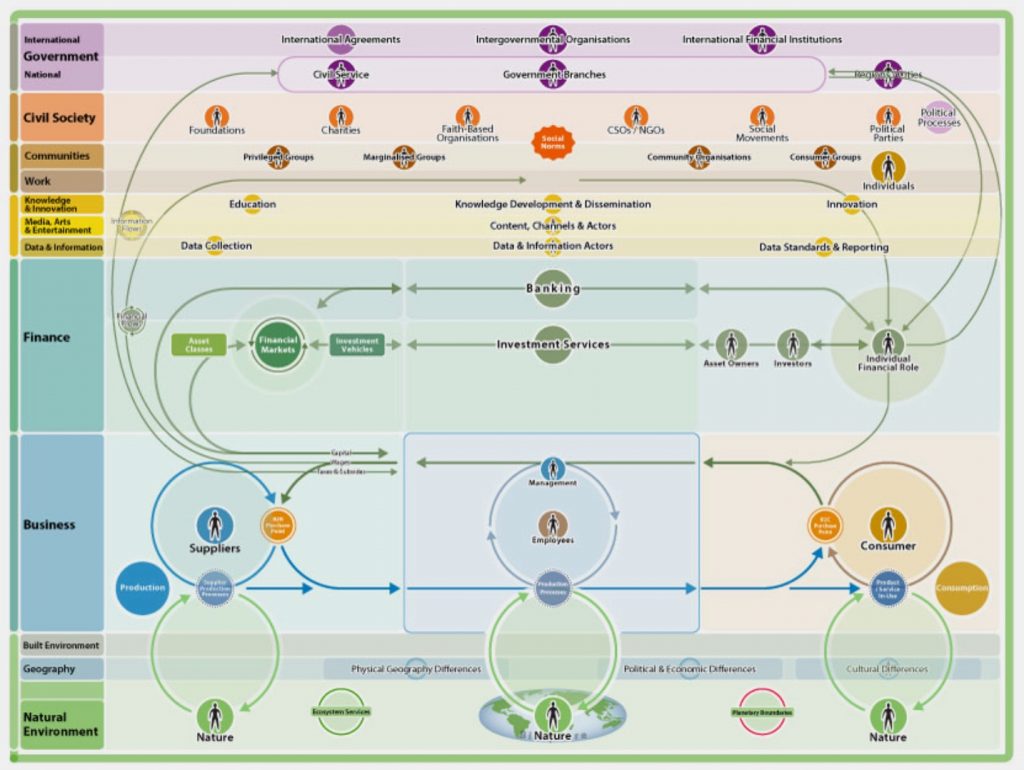

Gender Equality System
Social movements focused on gender equality are addressing outdated costly practices and complacent frames of mind throughout society. To help accelerate these social transformations, the Gender Equality System Map enables users to explore the multi-faceted, historical issues around gender that affect all of us, every day. With awareness at an all-time high, and the need for change made clearer every day, the time to work together to achieve gender equality is now.
Gender Finance System
The Gender Finance System Map presents an overview of the multi-faceted field of gender finance. This tool was designed to help facilitate conversations, and catalyse the concerted actions required to shift the system and allow gender finance to break-through at scale. This project was initiated in June 2018, sponsored by the Tara Health Foundation and led by Suzanne Biegel of Catalyst at Large
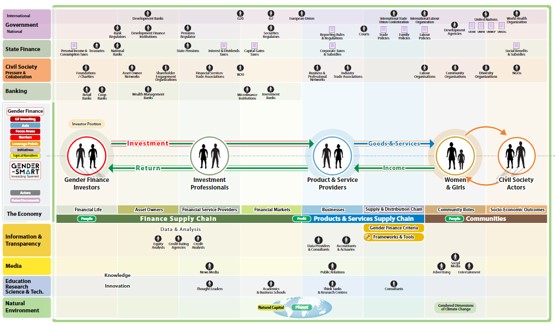
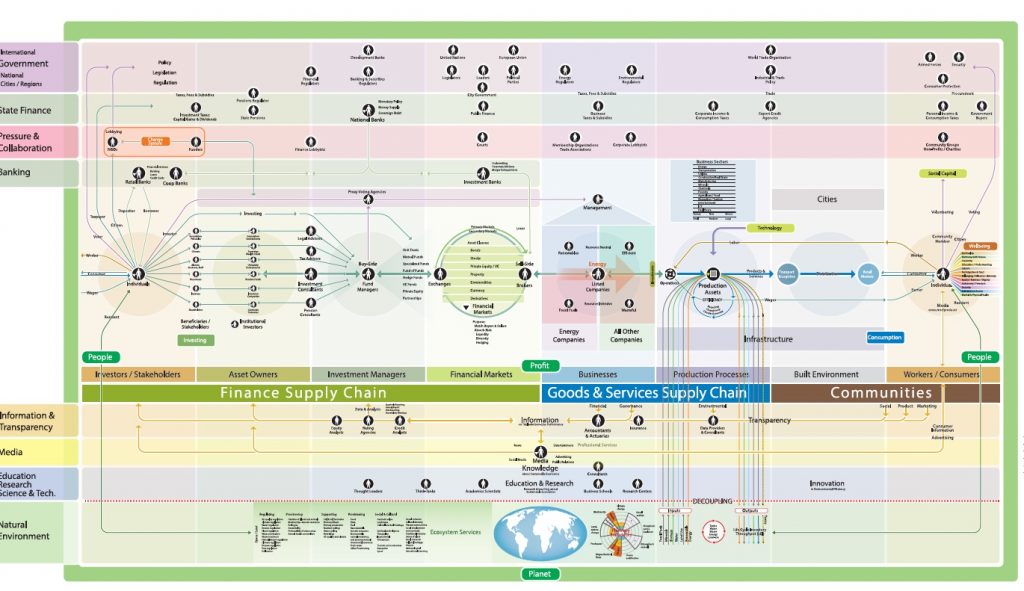
Sustainable Finance System
The goal of the Tellus Mater Sustainable Finance System Map is to provide an integrated overview of the various efforts underway to transform finance into an efficient engine of green and equitable growth, i.e., shifting capital flows away from ‘dirty’ industries and towards new more resource-efficient and sustainable enterprises. The map is the result of much desk-research, 50 interviews, a survey, and the critique of 5 workshops.
Nourish Food System
Large and complex, the food and agriculture system is deeply connected to a number of critical ecological, social and economic challenges. To better understand the agri-food system, we worked with WorldLink and its Nourish Initiative to map the system and visualize key sectors, issues, actors, and processes.
The map provides a holistic view of the food system that can be used to open meaningful conversations about food, health and sustainability. By telling a visual story, the map contributes to increasing food literacy and building healthy communities.
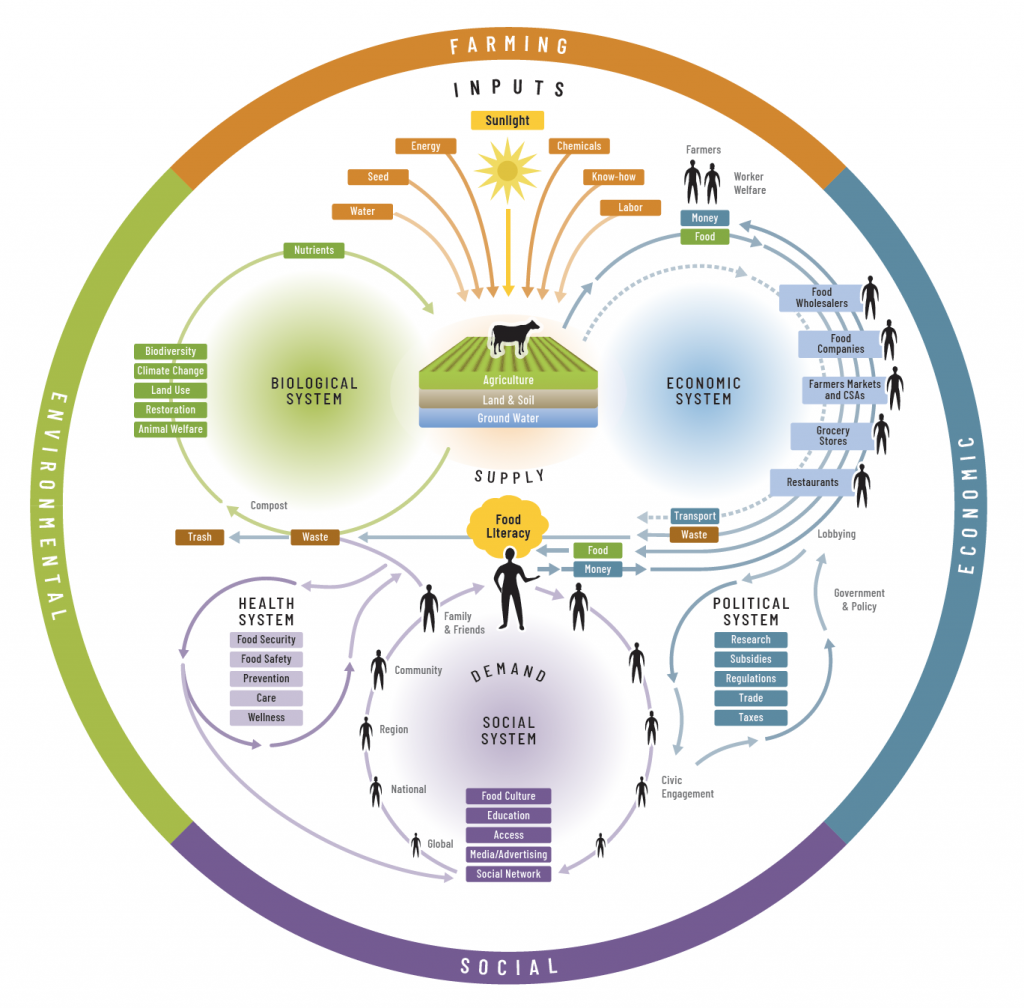
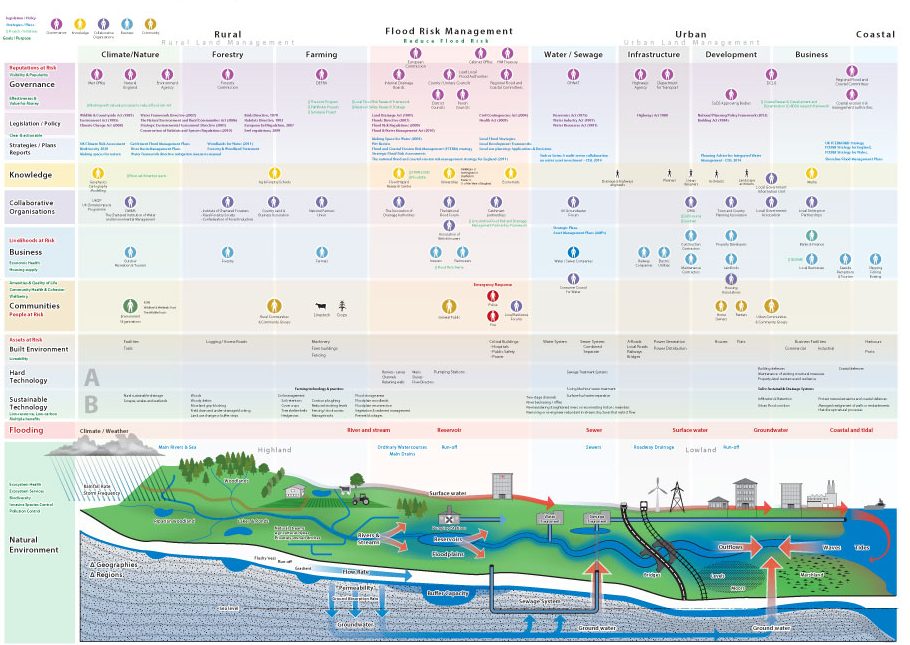
Forum for the Future Sustainable Water Movement
This Forum for the Future project convened multiple stakeholders to map the current water movement system, and then imagine what a more sustainable one might look like: one that moves away from ‘hard engineering’ solutions – such as dredging and flood defense walls – and towards solutions that work with the natural landscape and local communities to provide lower impact, more resilient solutions.
For this project, as in many others, we developed both a ‘structural map’ and an ‘influence’ or ‘causal loop’ diagram. The structural map depicts a physical watershed; aligned with the relevant technologies, users, governance organisations, and regulations. The causal loop diagram shows the lines of influence that connect the water-management system, as well as the leverage points for intervention chosen by the project group.
Physical Activity System
Nike – Designed to Move
Based on a comprehensive review of the relevant science, this is an integrated view of the many different factors that contribute to people being physically active. It was created to provide the foundation for the Designed to Move initiative.

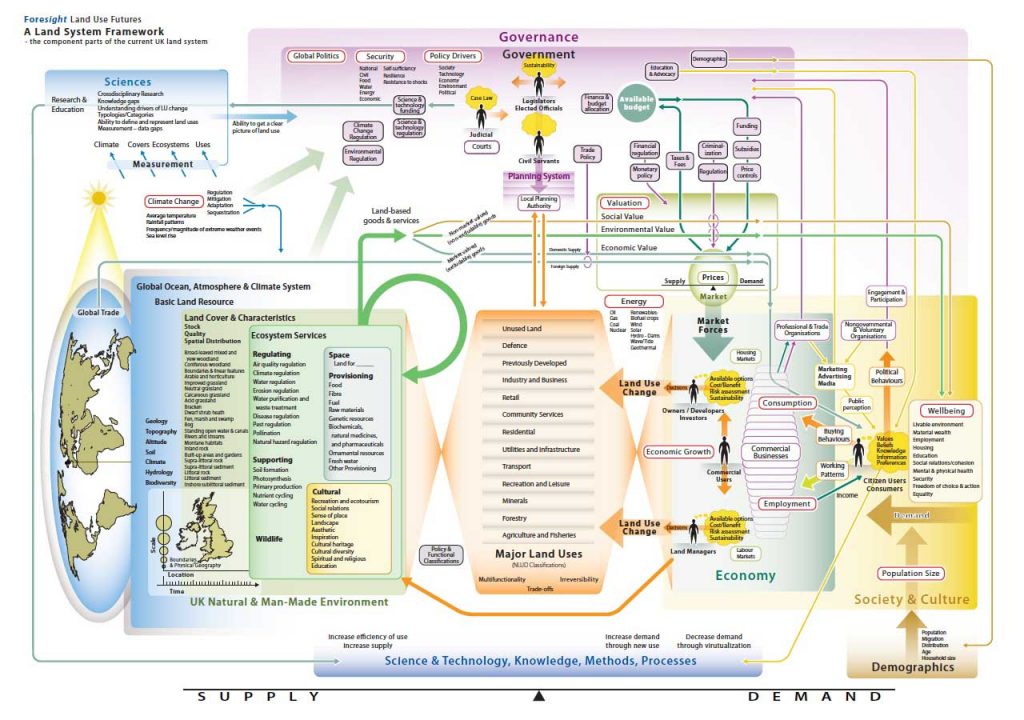
Land Use Futures
The Foresight Land Use Futures project aimed to use the “best available scientific and other evidence to take a broad look at the most important challenges and opportunities for land use in the UK over the next 50 years. What needs to be done to use and manage land more sustainably and to unlock greater value for people and the economy – now and in the future.”
Mental Capital and Well being
For this project on Mental capital and wellbeing we mapped many different aspects of wellbeing through life, including:
• Mental capital through life
• Learning through life
• Mental health & stigma
• Well being at work
